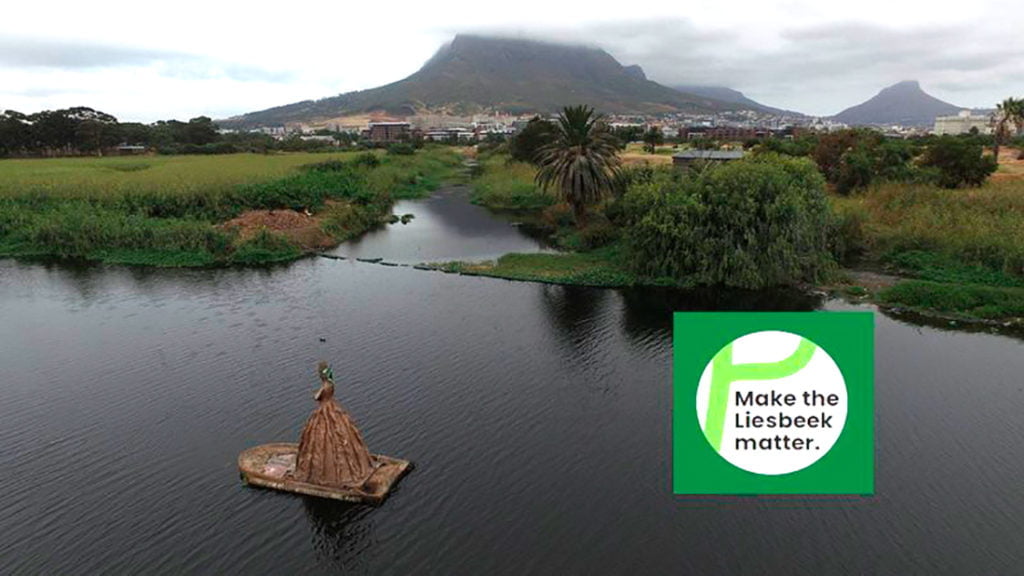Sign this Petition
23 FEB 2021
Leslie London – Cape Town, South Africa
Minister Bredell released his decision on the appeal against the Environmental Authorisation which was granted to the developers of the River Club last year. Yesterday on the 22nd February, he issued a 128-page report in which he rejected the appeals lodged by 21 different individuals and organisations. We are not surprised that he rejected the appeals against his Department’s Environmental Authorisation (EA) granted to the River Club; we are just surprised at the amount of paper he wasted pretending to have considered the matter fairly and seriously. Bredell’s track record on matters to do with development is clear – the Phillip Horticultural Area, the Noordhoek Wetlands, the Hangklip/Kleinmond Federation of Ratepayers Associations, the Martin Melck Warehouse in which he has permitted developments to go ahead, preferring economic benefits over other considerations.
His department had long ago signalled its intention that this development was going ahead, no matter what, when it joined the developers in appealing the Provisional Protection Order issued by Heritage Western Cape (HWC) in 2018. So, when we appealed the decision by his Chief Director to grant the EA in August last year, we wondered whether the appeal authority, who is in this case, the Minister of Local Government, Environmental Affairs and Development Planning, would consider the evidence fairly.
What emerged in December 2020 was that Bredell was looking for a way to get around the awkward fact that his department, in granting the EA, ignored the legal obstacle that HWC had rejected the Heritage Impact Assessment (HIA). Under the National Environmental Management Act (NEMA) and under the Standard Operating Procedures (SOPs) between DEADP and HWC, DEADP were meant to take guidance from HWC, at the very least, and meet with HWC if their recommendations were negative. The DEADP decision maker did not do so but chose to use a further heritage report from the developer to claim that heritage matters had been satisfactorily addressed.
Faced with this decision, Bredell, as the Appeal authority, was meant to look at whether that process was fair and substantively correct. Instead, Bredell wrote twice to HWC, in a peremptory tone, to instruct them to tell him what additional information HWC expected in order for the HIA to meet the requirements of the NHRA.
He clearly did not bother to read HWC’s final comments otherwise he would have seen how absurd such a request was.
HWC pointed out that the River Club HIA:
1. failed to develop appropriate heritage indicators,
2. did not identify and map heritage resources and
3. failed to assess the significance of the site correctly.
As a result, assessment of the impact of the development was flawed. To ask for more information is like asking the person who gave you a report that detailed why your car was not roadworthy to tell you what information you need so that you can get a roadworthy certificate. The obvious solution is to fix the car, not to ask for more information.
HWC referred Bredell back to its final comments twice, explaining that the Final Comment made clear why the HIA failed and what would need to be done. In other words, no further information could correct the HIA, it had to be redone, as the TR LSDF HIA has to be redone.
However, this appears to have been sufficient for Bredell to use as an excuse for bypassing HWC once again.
In legal circles, there is a concept called ‘curing a decision’. If an administrative body failed to consider a piece of information or a key document when coming to a decision, then the primary decision is flawed. But if the appeal body considers the overlooked document, and comes to the same decision, then the original defect in the first decision is said to be ‘cured.’ It seems as if Bredell has cured the original flaw. But in the process of curing the decision, he has killed the patient – the Liesbeek will be infilled, the valley shrouded in concrete and the intangible heritage of the area permanently destroyed.
We are not surprised this is the result because there is no reasoning with the authorities. They want this development to go ahead and will not brook citizen voice against it. They will believe the fiction that the development has support of the Khoi people. They will gleefully swallow the notion that this mega development will not be harmful to climate resilience. And the timing of the decision reveals how carefully the DA administration is choreographing these decisions for the developer’s benefit. In August 2020, the DEADP issued its EA and within days, a special sitting of the MPT was set up to decide on the rezoning. Both decisions went in the developer’s favour. The appeals poured in. The City set up its Appeal Panel for the 23rd February and Bredell released his decision on the 22nd, the day before the panel met, so the chief planner for the developers could triumphantly announce in the Planning Appeals Panel that the EA appeal had been rejected the day before and the applicants lawyer could use the Minister’s narrative in the Panel hearing to persuade the Panel that heritage was adequately addressed. The orchestration was flawless.
We are told that in developer circles, the Minister under whom Heritage Western Cape fall has come to be seen as someone who can’t control her underlings – who are far too independent.
This is the administration we have. So be it. Like Xolobeni, Like Somkhele, Like the PHA, we will have to turn to the courts for justice. Because we aren’t going to get it from Bredell and the DEADP.


